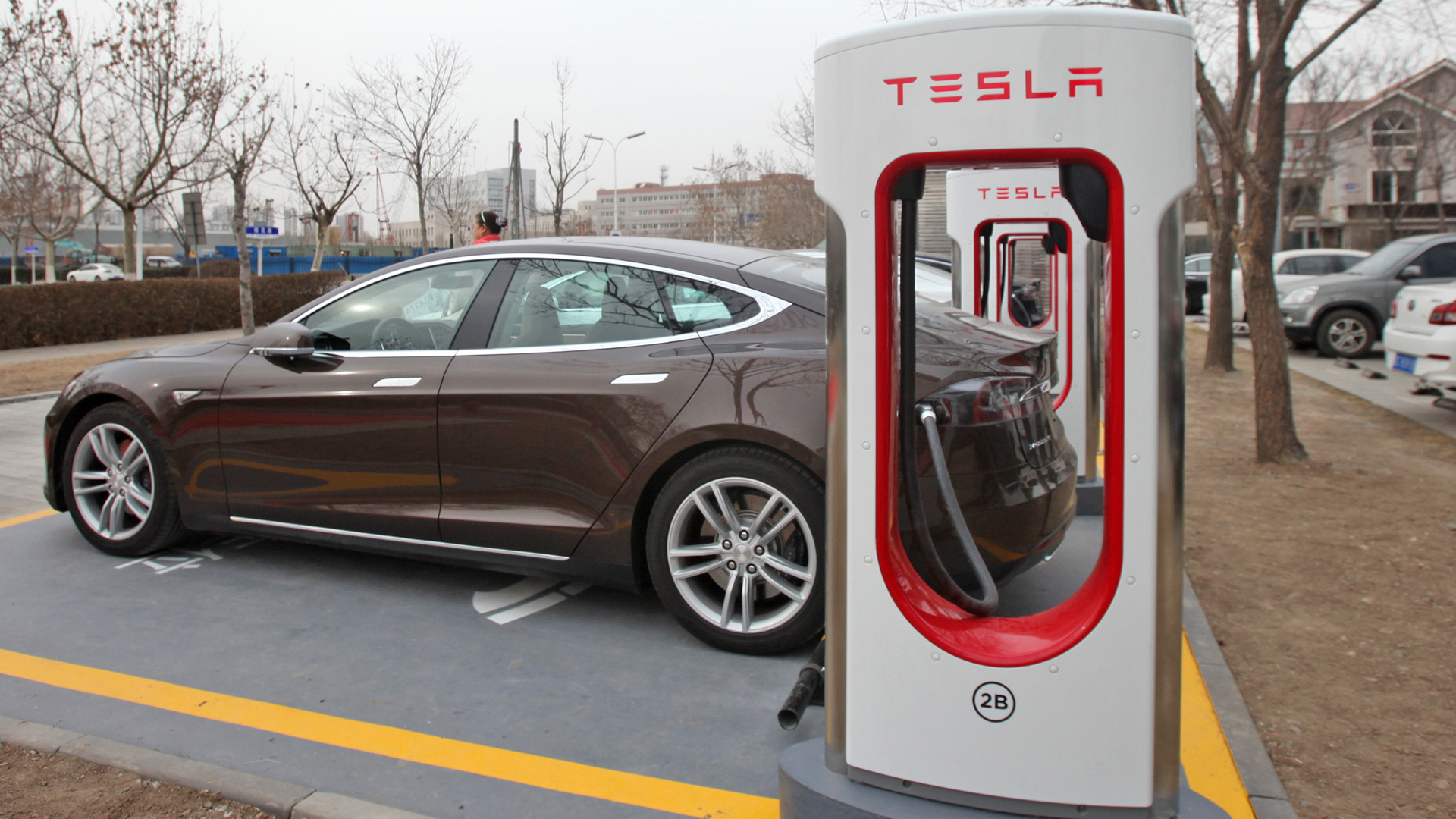

Tesla unveiled its all-new Supercharger v3 to the public on Wednesday night. The new chargers can provide a maximum charging rate of 250 kilowatts, enabling the Tesla Model 3 to receive 75 miles of range in just 5 minutes.
The automaker says its new Superchargers are capable of 1,000-miles-per-hour charging, referring to the peak output of the charger for a brief period of time thanks to its new liquid-cooled cable. Real-world testing shows that the Model 3 benefits from a charge reduction of about a third, charging from 8 percent to 90 percent in about 40 minutes instead of an hour.

A new 1-megawatt charge cabinet is also added to locations in order to split the 250 kW charge between four vehicles simultaneously. This means owners won’t have to experience a slower charge time when sharing with a neighbor.
For now, Tesla has only installed its preview Supercharger V3s in Fremont, California and will only make them available to members of its early access program. More chargers will begin rolling out in April for North America. Because the rollout requires new hardware, Tesla says that it will help satisfy owners by increasing the charge rate on its existing Supercharger v2 infrastructure by about 20 percent. Vehicles will soon be able to charge at a rate of 145 kW, an increase from the current 120 kW maximum charge rate vehicle can currently draw from the grid.
Tesla says that only the Model 3 will be updated to support the maximum charge rate of 250 kW, at least for now. The Model S and Model X will experience an undisclosed increase to their respective charging rate “in the coming months.”

Tesla has also tipped its hat at the cold weather environments who struggle to charge and maintain range in the winter time. A new feature called “On-Route Battery Warmup” has been developed to help ready a battery for fast charging by preheating the cells when the car is being navigated to a Supercharging station. Tesla says that it will begin rolling out this feature for vehicles starting this week.
Fleet data from Tesla suggests that the new charge rate will help to reduce the average Supercharger stop to about 15 minutes. Presently, there are 12,888 Superchargers across the world at 1,441 Supercharger Stations; this covers about 99 percent of its U.S. market and is continually being improved upon to increase density as its vehicles increase in popularity. The automaker estimates that the new hardware and reduced visit time will enable the network to service twice as many vehicles per day by the end of 2019.